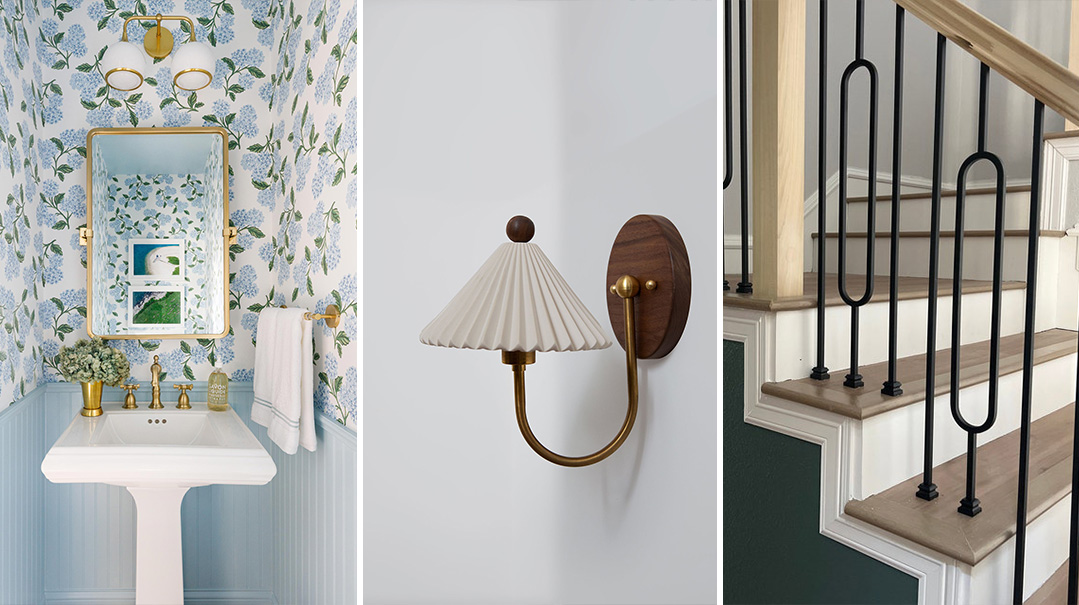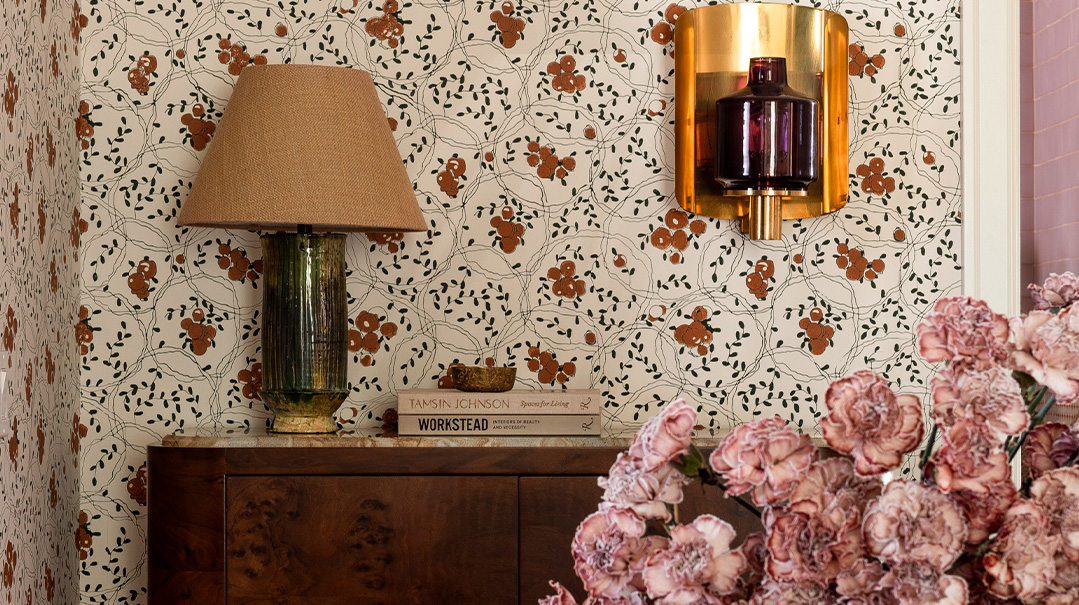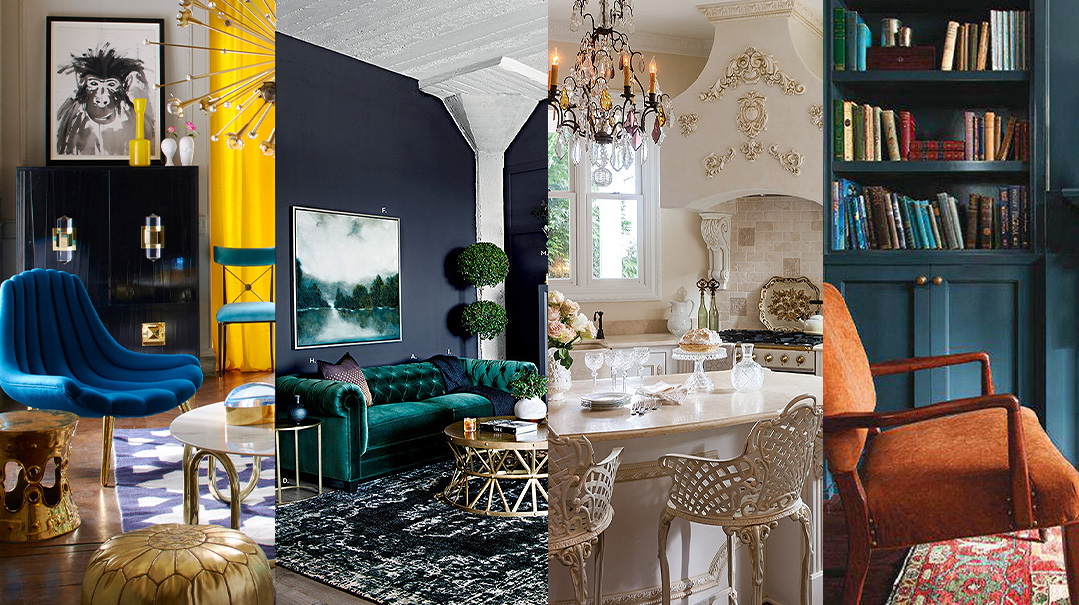An Art Story
| August 17, 2021
Text and Paintings by Libby Klein
Photography by Avi Gass
Art takes up a lot of real estate in my mind and heart, and I’m very excited to share my world with you in this article. My perspective on art sits beyond the canvas you see: to me, it speaks where words are unable to explain, and should spark joy. If you hear your voice, if you feel a piece resonating, make it yours and let it inspire you.
Colors
Paintings don’t need to be matchy-matchy with your decor, they just need to pick up on your color palette. If they’re too well-matched, they won’t stand out.
Size
In general, I make that decision with each client based on how much of a focal point they want the painting to be in a room. Sometimes it’s primarily a decor piece, and we go big. Other times, it’s a powerful, emotional story piece, and its strength is in its story, not its size. Going too big will detract from that.
Frames
Frames will either be an asset or a distraction. We’re seeing a lot of acrylic floating frames that give the painting more breadth and let it stretch out more. Sometimes a painting needs a decisive frame. Each piece is different.
How to Hang Art So It Lights Up Your Room
>Hang single artwork pieces at eye level.
>Museum standards are 60 inches from the center of the floor.
>If you’re hanging it above furniture, leave four to six inches of clearance.
>If you’re hanging art above a sofa or console, the piece should be approximately two-thirds of the width of the furniture.
>When you’re hanging two or more pieces near each other, treat them as one piece and follow the rules above.
>When hanging a gallery wall, large and medium pieces should hang two to three inches apart. Smaller pieces should be one and a half to two inches apart.
Note: See article Framed, in this issue, for more hanging guidance and guidelines.
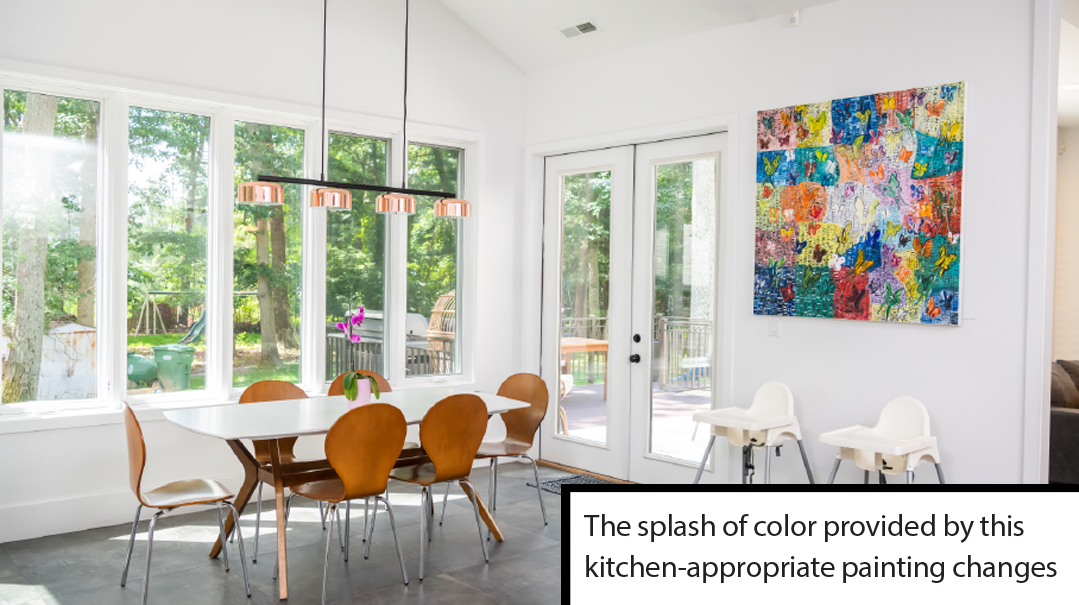
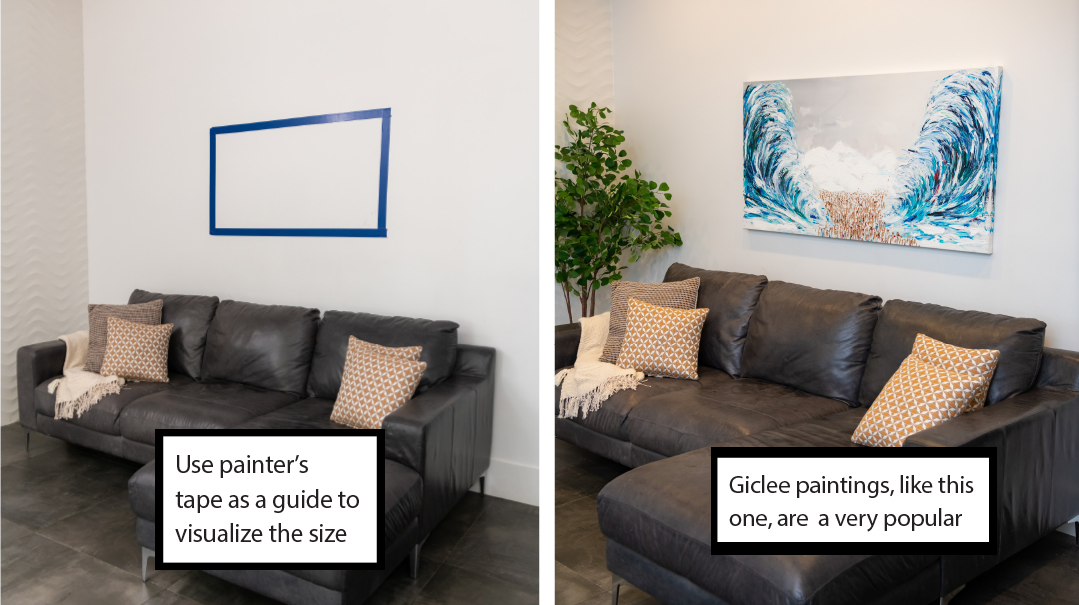
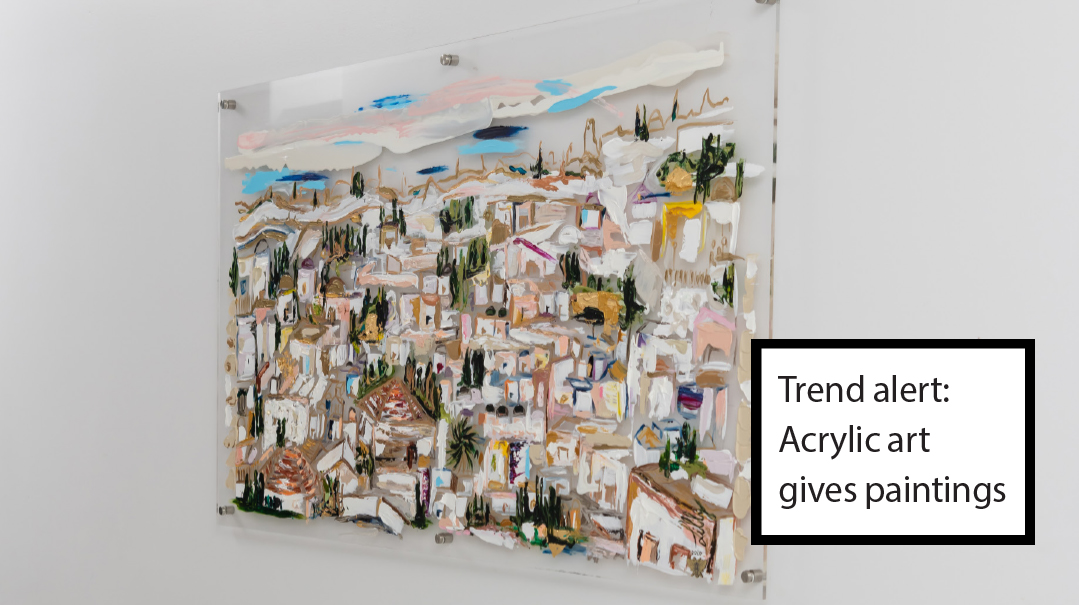
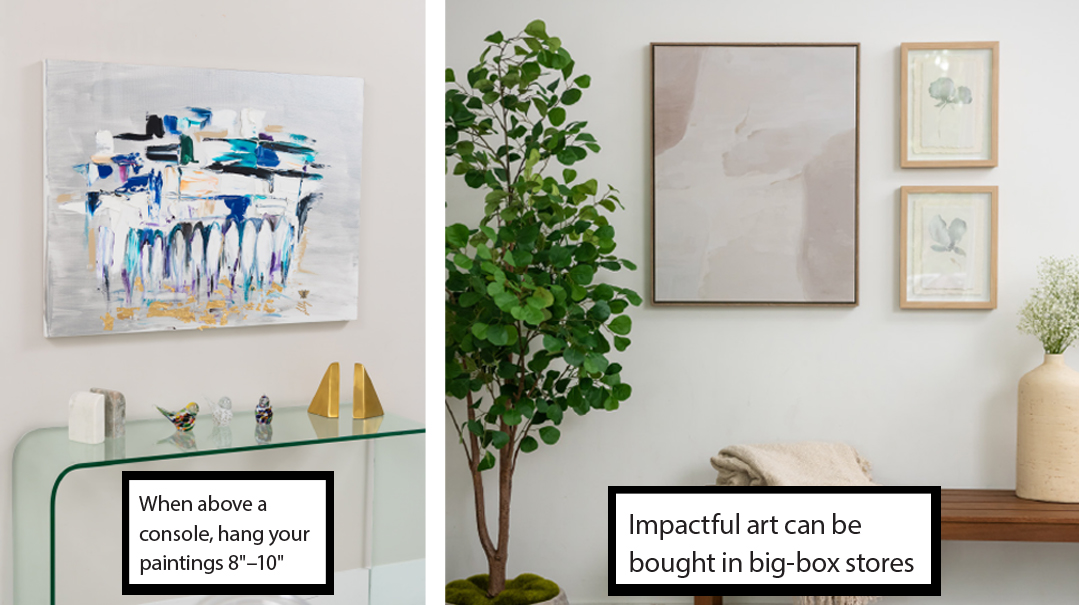
My Intake Process
A client calls and says they want to purchase a painting. The first thing I try to understand is what precisely are they looking for.
There are two ways to view a painting:
Decor:
Like a beautiful piece of furniture, it brightens your space and adds personality and character. People who view art this way focus on the color, the texture, and the visual, aesthetic quality.
Expression:
An expression of our human experience and personal perspective. People who view art this way focus less on the outward appearance and more on the inner significance of the story the piece tells.
I always try to accomplish both goals in each piece, but the conversation is different when a client leads by saying, “I want a monochromatic piece” versus
“I want to depict ein od milvado.”
After we establish what the client wants to see in their painting, we talk about sizing. I always advise my clients to buy painter’s tape and map out different sizes and shapes on their walls. Do they want skinny and long, square, rectangle? We want the art to look happy and comfortable in its new home.
We also talk about the room the painting will live in. For example, a seforim room calls for a more intense piece than the kitchen.
Many people will purchase multiple pieces, and they’ll ask if the paintings need to match. My response is not so satisfying in that it’s really a personal preference: are you going for a gallery feel or a cohesive decor scheme? Either way, framing should always be consistent.
Buying a Piece to Treasure
The best way to be sure you’re buying a piece that you’ll treasure for years to come is to know your own mind and taste, as opposed to buying into a fleeting trend. There are some great art personality quizzes online that will show you scores of paintings and ask which of them you like. They will then build you a profile and advise on what resonates with you.
Where to Find Art
Some of the best finds will come from HomeGoods and Homesense (see “Love It or Leave It?” in this issue for more tips on how to source). I’ve seen gorgeous pieces at West Elm, Etsy, and Artfinder. I like Art.com because it lets you filter by color, sets, and sometimes material. It even claims to offer free design advice! You can sometimes get lucky and find canvases on Ali Express, frame them beautifully, and voila!
Whatever it is, you should love what hangs on your walls and greets you when you walk into your rooms. Art is an experience, a moment. Make sure you enjoy it!
Libby Klein’s art brightens the living spaces of thousands of clients around the world. Libby specializes in high-end commission pieces, working primarily in oil on canvas or acrylic. She lives in Lakewood, New Jersey, with her husband and four children.
(Originally featured in Family Room, Issue 019)
Oops! We could not locate your form.


